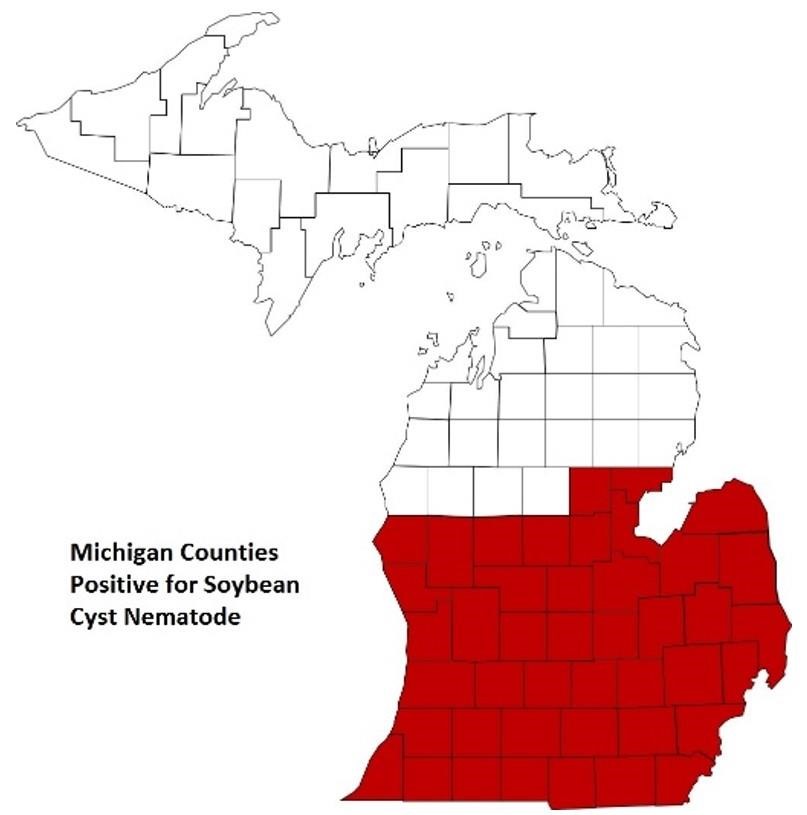By Angela Tenney and Fred Warner
If you have areas with lower-than-expected soybean yields that cannot be explained, it may be due to soybean cyst nematode (Heterodera glycines). This nematode is a major limiting factor in Michigan soybean production. Soybean cyst nematode is known to exist in all of Michigan’s major soybean producing counties. Soybean cyst nematode infestations can result in poor stands, stunted plants, yellow foliage and low soybean yields. Losses can range from 5 to 90 % of the yield potential. Hosts for soybean cyst nematode are mainly legumes such as soybeans, dry beans and snap beans. It has also been known to survive on some winter annual weed species, such as henbit (Lamium amplexicaule) and purple deadnettle (L. purpureum).
 Michigan counties positive for soybean cyst nematode as of 2021.
Michigan counties positive for soybean cyst nematode as of 2021.
Fall is a good time to sample for soybean cyst nematode in preparation for the 2022 soybean growing season. Monitoring for soybean cyst nematode is an essential part of nematode management. Early detection is critical in avoiding drastic yield losses and high population densities of soybean cyst nematode.